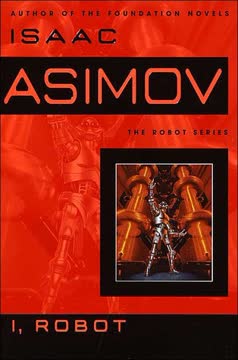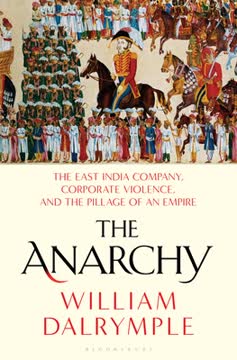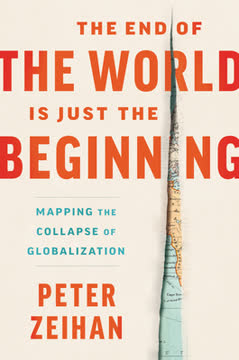Key Takeaways
1. Strategic planning often fails to deliver on its promises
"Planning has been a resounding and expensive failure."
Empty promises. Strategic planning, despite its widespread adoption and promises of improved performance, has often failed to deliver tangible results. Organizations have invested significant time and resources into elaborate planning processes, only to find that their carefully crafted plans become quickly obsolete or irrelevant in the face of rapidly changing business environments.
Evidence of failure. Numerous studies and anecdotal evidence have shown that formal strategic planning does not necessarily lead to better organizational performance. In many cases, companies that engaged in extensive planning performed no better, and sometimes worse, than those that did not. This failure can be attributed to several factors:
- Rigid adherence to plans in dynamic environments
- Disconnect between planners and operational realities
- Overemphasis on analysis at the expense of creativity and intuition
- Failure to account for emergent strategies and unexpected opportunities
2. Predetermination in planning is a fallacy in dynamic environments
"Forecasting and Planning: An Evaluation," found an "uncanny similarity between the history of [forecasting and planning] and formal psychological experiments concerning the 'illusion of control'."
Illusion of control. The assumption that the future can be accurately predicted and planned for is a fundamental fallacy of strategic planning. In reality, the business environment is often too complex and dynamic to be reliably forecasted, especially over long periods.
Limitations of forecasting. Several factors contribute to the ineffectiveness of predetermination in planning:
- Long-range forecasts are notoriously inaccurate
- Discontinuities and unexpected events can render plans obsolete
- The future is shaped by countless interconnected variables
- Human behavior and decision-making are inherently unpredictable
Organizations that rely too heavily on predetermined plans risk becoming inflexible and unable to adapt to changing circumstances. Instead, successful companies often adopt a more flexible approach, focusing on building capabilities to respond quickly to emerging opportunities and threats.
3. Detachment from operations hinders effective strategy formation
"Effective strategists are not people who abstract themselves from the daily detail but quite the opposite: they immerse themselves in it, while being able to abstract the strategic messages from it."
Immersion in details. Contrary to the common belief that strategists should maintain distance from day-to-day operations, effective strategy formation requires deep engagement with operational realities. Leaders who are intimately familiar with their organization's operations, customers, and competitive landscape are better positioned to develop meaningful and actionable strategies.
Dangers of detachment. When strategists and planners become detached from operational realities:
- They may miss crucial insights that can only be gained through direct experience
- Strategies may become disconnected from practical implementation challenges
- There's a risk of developing plans based on outdated or inaccurate assumptions
- The organization may lose the ability to respond quickly to emerging opportunities
Successful strategists maintain a balance between high-level thinking and ground-level understanding, allowing them to create strategies that are both visionary and pragmatic.
4. Overreliance on hard data can lead to flawed decision-making
"While hard data may inform the intellect, it is largely soft data that generate wisdom."
Limitations of hard data. While quantitative data is essential for informed decision-making, an overreliance on hard data can lead to flawed strategies. Hard data often provides an incomplete picture, lacking the nuance and context necessary for truly insightful decision-making.
Value of soft information. Effective strategists recognize the importance of combining hard data with soft information:
- Qualitative insights from customers, employees, and partners
- Intuition and experience of seasoned managers
- Contextual understanding of market dynamics and competitive landscapes
- Emerging trends and weak signals that may not yet be reflected in quantitative data
By integrating both hard and soft information, organizations can develop more robust and nuanced strategies that account for the complex realities of their business environment. This approach helps avoid the pitfalls of data-driven decision-making that ignores crucial qualitative factors.
5. Effective strategy emerges from learning and adaptation, not rigid plans
"Strategy making is an immensely complex process involving the most sophisticated, subtle, and at times subconscious of human cognitive and social processes."
Strategy as learning. Rather than viewing strategy as a fixed plan, successful organizations treat it as an ongoing process of learning and adaptation. This approach recognizes that the most effective strategies often emerge over time through experimentation, feedback, and adjustment.
Characteristics of emergent strategy:
- Flexibility to respond to changing circumstances
- Continuous learning from market feedback and operational experiences
- Ability to capitalize on unexpected opportunities
- Integration of insights from throughout the organization
Organizations that embrace this emergent approach to strategy are better equipped to navigate uncertainty and complexity. They develop the capability to sense and respond to changes in their environment, rather than rigidly adhering to predetermined plans that may quickly become obsolete.
6. Planning can impede commitment and creativity in organizations
"Creativity diminishes under the weight of big, thick leather binders."
Stifling innovation. Excessive focus on formal planning processes can inadvertently suppress creativity and innovation within organizations. When employees are required to adhere strictly to predetermined plans, they may feel less empowered to explore new ideas or respond creatively to emerging challenges.
Barriers to commitment. Overly formalized planning can also undermine organizational commitment:
- Employees may feel disconnected from strategies developed in isolation by planners
- Rigid plans can create a sense of powerlessness and reduced ownership
- The emphasis on following plans may discourage initiative and personal responsibility
To foster creativity and commitment, organizations need to balance the need for planning with the flexibility to encourage innovative thinking and personal ownership of strategies at all levels.
7. The obsession with control in planning can be counterproductive
"Planning is characterized by its emphasis on formalization, the systemization of the phenomenon to which planning is meant to apply."
Illusion of control. The desire for control is a primary driver of formal planning processes. However, this obsession with control can be counterproductive, especially in dynamic and uncertain environments.
Negative consequences of excessive control:
- Reduced ability to adapt to unexpected changes
- Suppression of emergent strategies and opportunities
- Overconfidence in the accuracy of plans and forecasts
- Neglect of important but less quantifiable factors
Effective organizations recognize that some level of uncertainty and chaos is inevitable and can even be beneficial. They focus on developing the capability to respond flexibly to changing circumstances rather than attempting to control every aspect of their future through rigid planning.
8. Formalization of strategy-making processes has inherent limitations
"Analysis can never provide synthesis."
Limits of formalization. While formal processes can be useful for certain aspects of strategy, such as data gathering and analysis, they have inherent limitations when it comes to the creative and synthetic aspects of strategy formation.
Key limitations of formalized strategy-making:
- Difficulty in capturing and processing soft information and tacit knowledge
- Tendency to favor incremental changes over transformative strategies
- Risk of oversimplifying complex realities into manageable frameworks
- Potential to stifle intuition and creative thinking
Successful organizations recognize these limitations and complement formal processes with approaches that allow for intuition, creativity, and emergent thinking in strategy formation.
9. Successful strategies often arise from intuition and tacit knowledge
"Managers (like the rest of us) know more than they can tell."
Power of intuition. Many successful strategies are born from the intuitive insights of experienced managers rather than formal planning processes. This tacit knowledge, built up through years of experience, allows leaders to recognize patterns and opportunities that may not be apparent through formal analysis alone.
Characteristics of intuitive strategy-making:
- Ability to integrate complex information rapidly
- Recognition of subtle patterns and weak signals
- Holistic understanding of the business ecosystem
- Capacity to make decisions under uncertainty
Organizations that value and cultivate intuitive strategic thinking, alongside more formal approaches, are often better positioned to develop innovative and effective strategies.
10. Planning should support strategy, not attempt to create it
"Planning works best when it comes last."
Planning as support. Rather than viewing planning as the primary means of strategy creation, effective organizations recognize that planning should serve to support and operationalize strategies that emerge through other means.
Appropriate roles for planning:
- Analyze and validate strategic insights and ideas
- Coordinate and align resources for strategy implementation
- Monitor and track progress towards strategic objectives
- Facilitate communication and understanding of strategy throughout the organization
By repositioning planning as a support function rather than the driver of strategy, organizations can maintain the flexibility and creativity necessary for effective strategy formation while still benefiting from the coordination and analysis that planning provides.
Last updated:
FAQ
What's The Rise and Fall of Strategic Planning about?
- Historical Overview: The book traces the evolution of strategic planning from its rise in the 1960s to its decline, questioning its effectiveness in modern management.
- Planning vs. Strategy: It explores the distinction between planning and strategy, suggesting that strategy can emerge organically rather than being strictly planned.
- Critical Analysis: Mintzberg critiques traditional strategic planning, arguing that it often fails to deliver and can hinder effective strategy formation.
Why should I read The Rise and Fall of Strategic Planning?
- Insightful Critique: The book offers a critical perspective on the limitations of formal strategic planning, essential for managers and planners.
- Practical Relevance: It provides insights into aligning planning processes with actual strategic needs, crucial for adapting to changing environments.
- Historical Context: Understanding the historical context helps appreciate the evolution of strategic planning and lessons from its failures.
What are the key takeaways of The Rise and Fall of Strategic Planning?
- Planning is Not Strategy: Mintzberg emphasizes that strategy formation is not a planning process, highlighting the need for flexibility.
- Emergent Strategies: The book introduces emergent strategies, which arise from actions rather than strict planning, advocating for adaptability.
- Role of Planners: Planners should act as catalysts for strategic thinking, not just enforcers of formal plans.
What are the best quotes from The Rise and Fall of Strategic Planning and what do they mean?
- “Planning is everything, and the plan is nothing.”: This underscores the value of planning as a process, but warns against rigid adherence to plans.
- “Strategy formation is not a planning process.”: Emphasizes the need for a dynamic approach to strategy, distinct from formal planning.
- “Planning can kill vision.”: Warns that rigid planning can stifle creativity and adaptability, advocating for a balance between structure and flexibility.
What is the relationship between planning and strategy in The Rise and Fall of Strategic Planning?
- Interconnected Yet Distinct: Planning and strategy are related but not synonymous; effective strategy can emerge without formal planning.
- Formalization vs. Flexibility: The book critiques rigid planning processes, which can inhibit adaptability in dynamic environments.
- Emergent Strategies: Strategies can develop organically through actions and experiences, rather than through predetermined planning.
How does Mintzberg differentiate between analysis and intuition in the book?
- Analysis vs. Intuition: Analysis is a left-brain function focused on decomposition, while intuition emphasizes synthesis and holistic thinking.
- Role in Strategy Formation: Effective strategy formation relies more on intuitive processes than on formal analysis.
- Implications for Managers: Managers should value intuition in decision-making and strategy formation, integrating it with analytical methods.
What is the "planning dilemma" mentioned in The Rise and Fall of Strategic Planning?
- Definition of Planning Dilemma: The conflict between planners' analytical skills and the practical needs of managers.
- Consequences of the Dilemma: Leads to superficial planning that doesn't address real-world complexities.
- Resolution of the Dilemma: Effective strategy requires integrating planners' skills with managers' authority and flexibility.
How does Mintzberg propose organizations should approach strategic planning?
- Flexible Approach: Advocates for a flexible, adaptive approach that prioritizes intuition and responsiveness over rigid formalization.
- Integration of Analysis and Intuition: Emphasizes combining analytical methods with intuitive thinking in strategy-making.
- Avoiding Premature Closure: Warns against closing off strategic options by adhering too strictly to formal plans.
What are the fundamental fallacies of strategic planning discussed in The Rise and Fall of Strategic Planning?
- Fallacy of Predetermination: Critiques the assumption that the future can be accurately predicted and controlled through planning.
- Fallacy of Detachment: Planners can become detached from operational realities, leading to ineffective plans.
- Fallacy of Formalization: Warns against believing that formalized processes can capture the complexities of strategy formation.
What are the roles of planning, plans, and planners as described in the book?
- Roles of Planning: Primarily a means of programming existing strategies rather than creating new ones.
- Roles of Plans: Serve as communication media and control devices, aligning strategic direction and resource allocation.
- Roles of Planners: Act as analysts, catalysts, and finders of strategies, encouraging strategic thinking and identifying emergent strategies.
How does Mintzberg suggest planners can improve their effectiveness?
- Be Catalysts for Change: Planners should encourage strategic thinking and innovation, not just enforce formal plans.
- Integrate Analysis and Intuition: Balance analytical thinking with intuitive insights in strategy formation.
- Adapt to Context: Tailor planning processes to the specific context and needs of the organization.
What are the implications of Mintzberg's critique of strategic planning for modern organizations?
- Need for Adaptability: Recognize the limitations of formal planning and adapt strategies to changing environments.
- Valuing Intuition and Experience: Encourage environments where intuition and experiential knowledge are valued in decision-making.
- Integrating Strategy and Operations: Integrate strategy formulation with operational realities for a holistic understanding and effective strategic initiatives.
Review Summary
Readers find The Rise and Fall of Strategic Planning intellectually stimulating and insightful, praising its critique of traditional planning methods. Many appreciate Mintzberg's analysis of planning failures and his emphasis on strategy over rigid planning. Some found it technical and dense, but valuable for understanding management concepts. The book is considered a classic in the field, offering important observations on formal planning's challenges. Reviewers recommend it for those interested in strategy and management, though some note its dated content.
Similar Books










Download PDF
Download EPUB
.epub digital book format is ideal for reading ebooks on phones, tablets, and e-readers.






